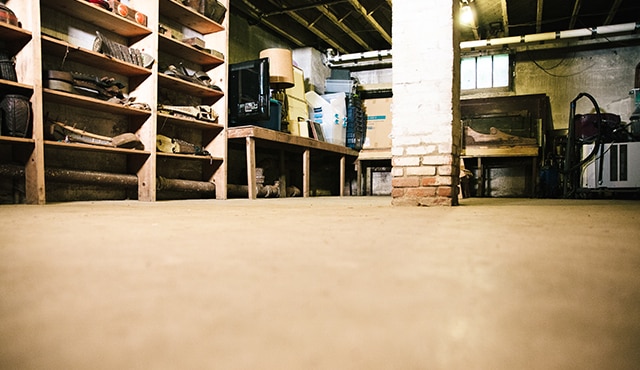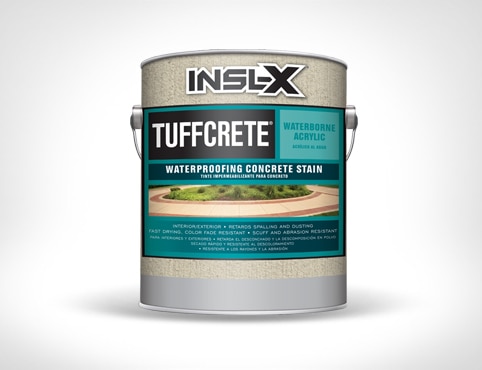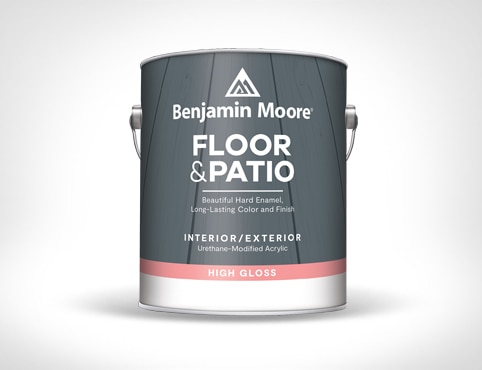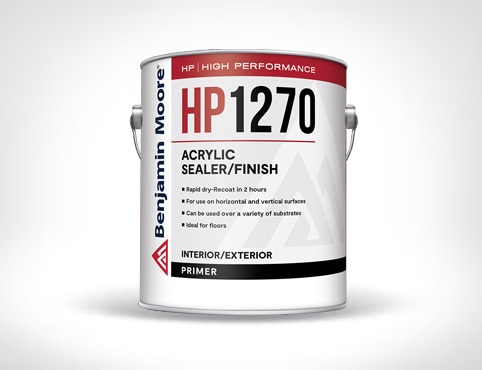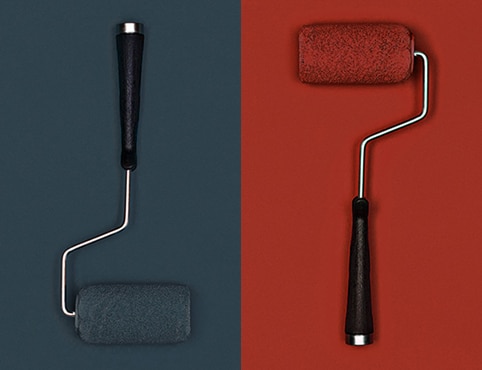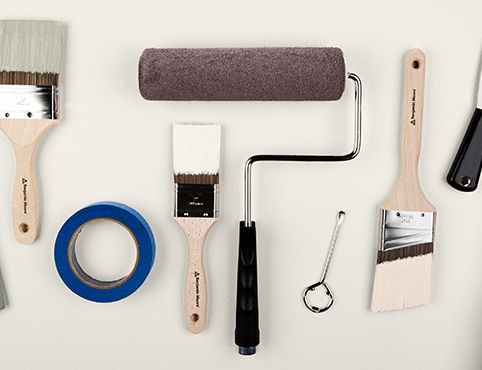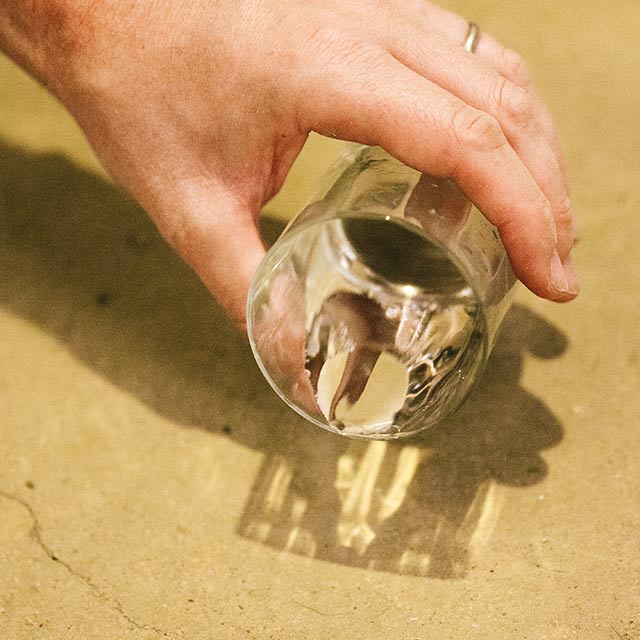

Step #1: Determine whether your floors are bare concrete or previously coated.
Do the water drop test to check if your floors are bare concrete or have been previously sealed or painted:
- Pour a dime-sized drop of water on the floor.
- Wait 60 seconds.
- If it beads up and doesn’t soak into the floor, the surface has been previously sealed or painted.
- If the water soaks into the floor after a minute, it is bare concrete.
If you determine that your floor has been previously painted or sealed and you’d like to re-do it, you may have to use a grinding machine to smooth out the surface before sealing. Try applying sealant to a small patch of the existing coating on a clean and dull floor. If there is no adverse effect, it can likely be re-coated. If the sealant doesn’t adhere, it may be necessary to grind the floor.
Helpful Tip
• Since concrete grinders are expensive, renting one makes sense. Visit your local Benjamin Moore® retailer for advice on rentals.• Consider consulting a professional if you determine that your floors have already been painted or sealed and you’d like to re-do them.
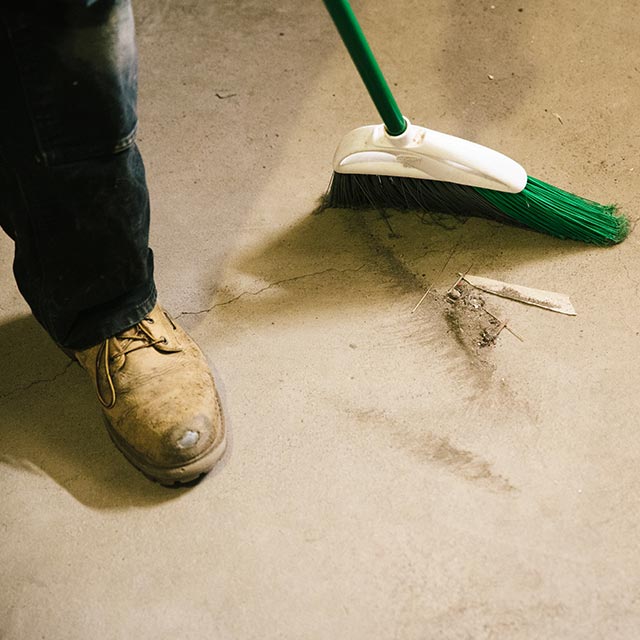

Step #2: Clean and prep your space
Start by removing all furniture and rugs from the area you’re sealing. Thoroughly clean the entire floor by sweeping and mopping the space, and use a damp cloth with warm soapy water in a bucket to remove any difficult spots. Rinse well with clean water and allow the floor to dry for 24 hours.
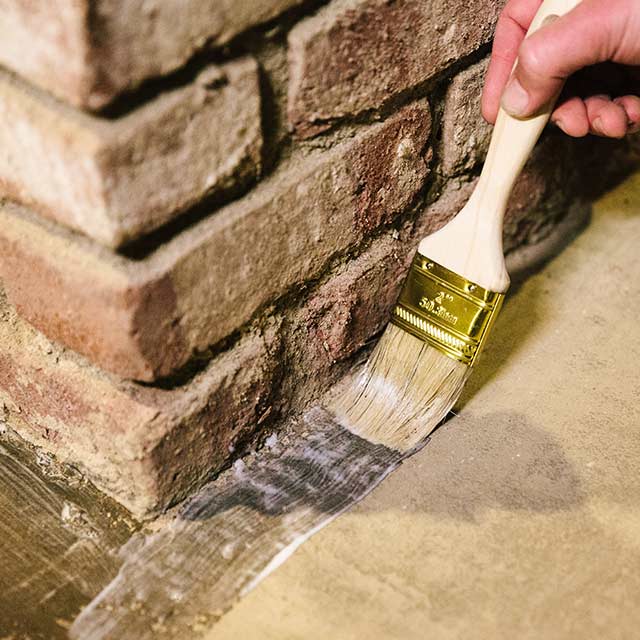

Step #3: Cut in your floor
Using a paintbrush, establish the borders of your project by applying the sealant to the floor around the edges of the room.
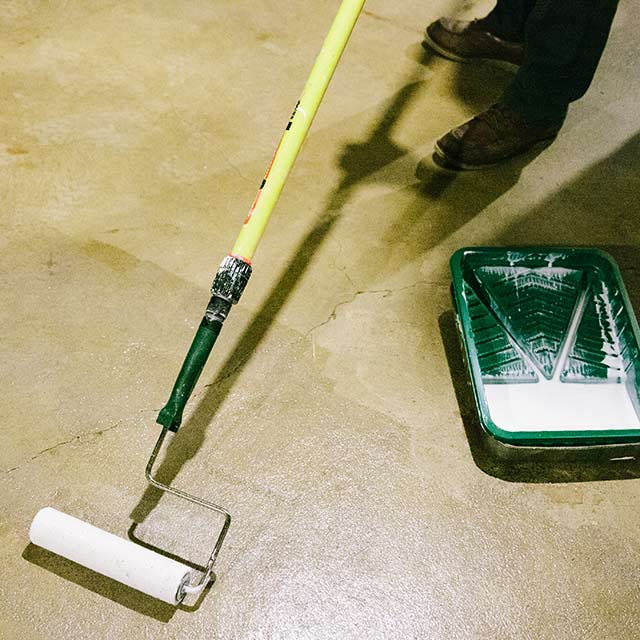

Step #4: Seal the Floor
Switch to a roller and paint tray. Roll the sealant onto the floor, working toward the exit of the room, so as to not paint yourself in. Allow the sealant to dry (check the can for recoat time) before applying a second coat. Roll the second coat in the opposite direction of, or at a right angle to, the first coat.
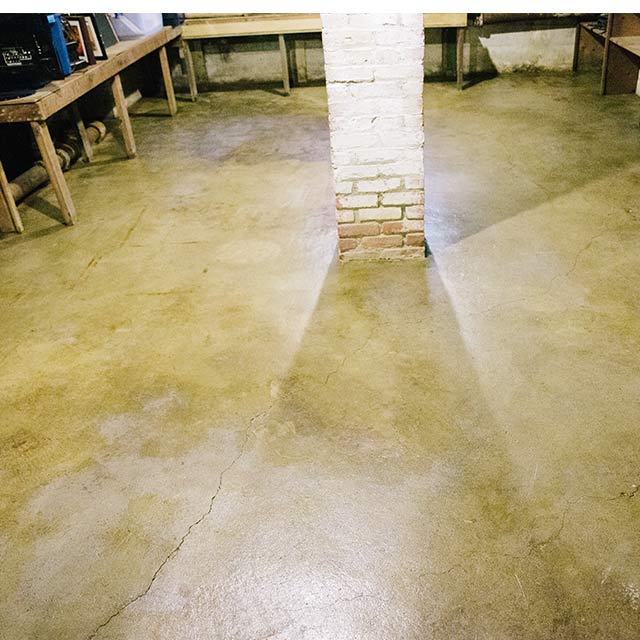

Step #5: Allow the floor to dry completely
Check the back of the can to find the dry time of your sealant. Dry time is very important when sealing concrete floors, as you’ll want to be sure the sealant has fully dried before you walk on or return furniture to your concrete floor.
